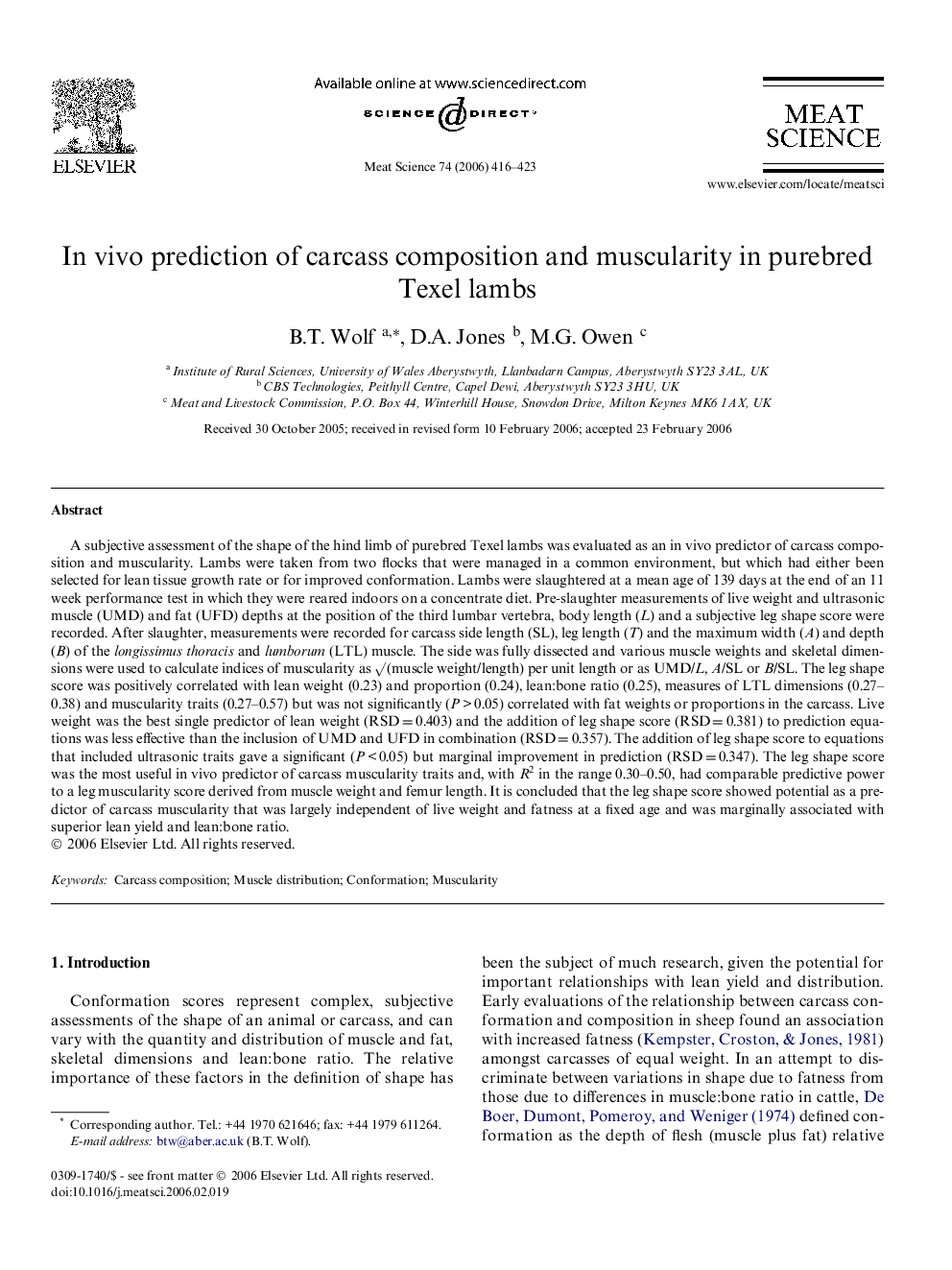| کد مقاله | کد نشریه | سال انتشار | مقاله انگلیسی | نسخه تمام متن |
|---|---|---|---|---|
| 2452172 | 1109708 | 2006 | 8 صفحه PDF | دانلود رایگان |

A subjective assessment of the shape of the hind limb of purebred Texel lambs was evaluated as an in vivo predictor of carcass composition and muscularity. Lambs were taken from two flocks that were managed in a common environment, but which had either been selected for lean tissue growth rate or for improved conformation. Lambs were slaughtered at a mean age of 139 days at the end of an 11 week performance test in which they were reared indoors on a concentrate diet. Pre-slaughter measurements of live weight and ultrasonic muscle (UMD) and fat (UFD) depths at the position of the third lumbar vertebra, body length (L) and a subjective leg shape score were recorded. After slaughter, measurements were recorded for carcass side length (SL), leg length (T) and the maximum width (A) and depth (B) of the longissimus thoracis and lumborum (LTL) muscle. The side was fully dissected and various muscle weights and skeletal dimensions were used to calculate indices of muscularity as √(muscle weight/length) per unit length or as UMD/L, A/SL or B/SL. The leg shape score was positively correlated with lean weight (0.23) and proportion (0.24), lean:bone ratio (0.25), measures of LTL dimensions (0.27–0.38) and muscularity traits (0.27–0.57) but was not significantly (P > 0.05) correlated with fat weights or proportions in the carcass. Live weight was the best single predictor of lean weight (RSD = 0.403) and the addition of leg shape score (RSD = 0.381) to prediction equations was less effective than the inclusion of UMD and UFD in combination (RSD = 0.357). The addition of leg shape score to equations that included ultrasonic traits gave a significant (P < 0.05) but marginal improvement in prediction (RSD = 0.347). The leg shape score was the most useful in vivo predictor of carcass muscularity traits and, with R2 in the range 0.30–0.50, had comparable predictive power to a leg muscularity score derived from muscle weight and femur length. It is concluded that the leg shape score showed potential as a predictor of carcass muscularity that was largely independent of live weight and fatness at a fixed age and was marginally associated with superior lean yield and lean:bone ratio.
Journal: Meat Science - Volume 74, Issue 2, October 2006, Pages 416–423